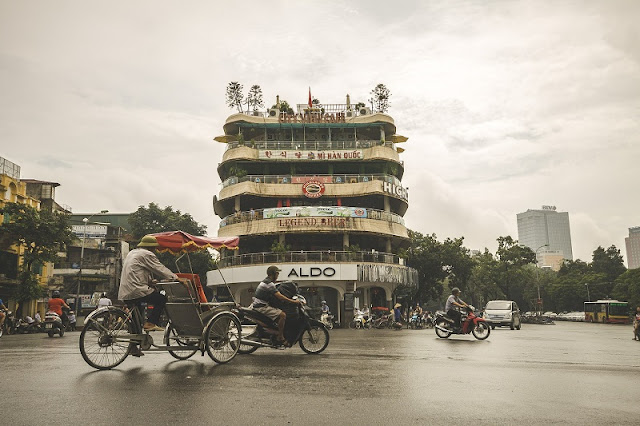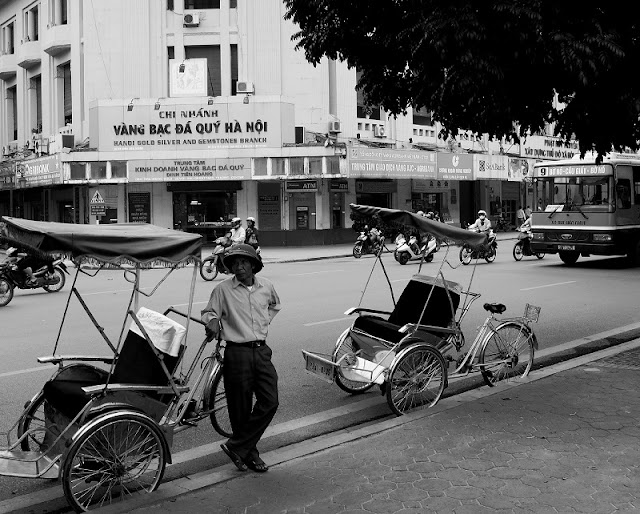Hanoi, the capital of glorious Vietnam! What an exciting city to explore! It’s full of action, rooftop bars, gorgeous street food and zillions of bikes whizzing back and forth. It seems like it’s trying to catch up, and very fast, with the rest of the world after decades of setbacks such as the devastating Vietnamese (or American as the locals call it) War.
Anyone who visits the capital also visits 36 streets of the land. It is still bustling business capital of Hanoi as their name meaning from the old days. Hanoi 36 streets associated with the development of thousands of years of land thousand years of civilization. Over the ups and downs of history, the names of these streets have not changed much. However, the meaning of the name as well as the origin of these streets is not known.
 |
| Photo by Leon_Ting on the pixabay |
According to Assoc. Nguyen Bich Ha, the common characteristics of the Hanoi Old Quarter are many street names beginning with the word "Hang". Then there is the word for a career such as Hang Dao, Hang Bac, Hang Thiec, Hang Ma ... To know the origin of the meaning of the name 36 streets in Hanoi, first of all, talk about the formation of the street.
When the King Ly left the capital from Hoa Lu to Thang Long, Hanoi has no city. It's just villages. From the village to the city is the change occurs very quickly, in the first urbanization. By the time Hanoi became the capital, this place gathered a lot of intellectuals. It is said that these are classes of enjoyment, very like enjoyment, because they are upper class and have money.
The change from village to city so fast so the development of this place attracted many shops, services from other localities to provide all the needs of the capital. So a circle around Thang Long has many villages appearing as in Son Tay, Thuong Tin, Hung Yen, Hai Duong.
 |
| Photo by nguyenhuynhmai on the pixabay |
At first people from everywhere brought goods to Thang Long for sale and at the end of the day they will return. But there are people who bring goods to Thang Long to sell, but if they have not finished selling, they will build the tent to sell next day, sell out new goods back. And there are those who reside in Thang Long for sale. Thus, gradually the people who come here to trade them gathered together with the same people, the same family, the same merchandise trade.
The first thing they gathered together was to avoid robbery theft where they were quite strange. Gradually, such places become a place where many people sell one type of goods and become a city.
The names of these streets are derived from what they used to sell before they were given the name. From there appeared a series of street names beginning with the name "Hang". The city has to go through quite a long time. Since the Ly dynasty there have been several street names associated with merchandise, and especially in the Tran dynasty, the Le dynasty flourished. Nguyen Trai's book of Dư Địa Chí has also talked about Hanoi 36 streets where there are two wards in each ward with 18 streets.
 |
| Photo by RichardX on the pixabay |
But actually the number of streets called "Hang" is more than 36, Hanoi increasingly developed, the goods are increasingly rich, so the city called the goods are also more and more. The streets starting with the name "Hang" not only Ha Noi but Hai Duong, Hai Phong also. Because the name actually refers to the place where the item is sold. But Hanoi is different in that there are streets selling the typical goods of the capital such as Hàng Lọng and Hàng Kiệu, which are sold only to the mandarins but to the mandarins in the capital. And only the capital Thang Long new selling such special products.
Now most of the streets of Hanoi with names such as Hang Dao, Hang Ngang, Hang Luoc ... still do not produce the goods as its name anymore. Hang Hom street does not produce the Ark anymore. Khoai street does not sell potatoes anymore, instead of Hang Khoai street sells dishes, famous Hang Duong street with O Mai, Hang Ga street, printing wedding cards.
In addition, there are still streets selling items such as its ancient name, Hàng Thiếc still selling tin, the current projection is still famous for selling ... but the number of street names that still sell items as old is very little.
However, many who come to the capital still visit the 36 streets of the economic land. It is still bustling business capital of Hanoi as the meaning of their names from the past. Visit Hanoi and explore the 36 famous streets with us you will get more interesting information about Hanoi.
